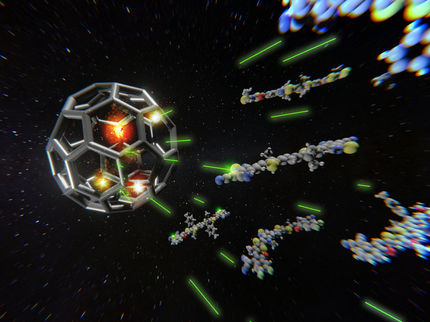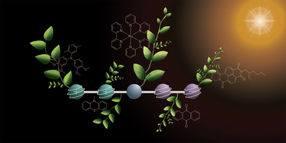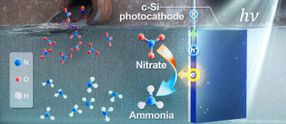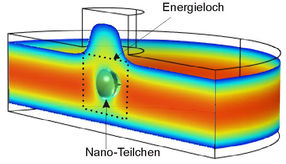A better understanding of ‘hole hopping’ in solar cells
Advertisement
A team of scientists from the UK, Spain and Switzerland say a method they have developed for probing electron transfer reactions could help them design more efficient solar cells.
The research team, led by Piers Barnes of Imperial College London, has pioneered a technique that measures the diffusion coefficient of a less well-reported phenomenon known as ‘hole hopping’, which occurs between sensitised dye molecules anchored to surfaces (in this case TiO2).
Monitoring the behaviour of charges in photovoltaic devices is important for improving charge collection, especially in dye sensitised solar cells (DSSCs) that convert sunlight to electricity. DSSCs are attractive for use in photovoltaic devices because they are simple to make, flexible and transparent but they still have a way to go in terms of efficiency.
Barnes explained: “When an excited electron in a sensitised molecule is transferred, it’s possible for the remaining electron hole to hop to another dye molecule.”
This allows a charge to be transported across a surface via a kind of molecular wire.
The method the team has developed uses simple cyclic voltammetry to measure variations in the diffusion coefficient with temperature, from which an estimate of the reorganisation energy for charge transfer between sensitiser molecules can be derived. By applying this to a range of well-known dyes, the features that lead to reduced reorganisation energies could be determined and used to design new dyes for DSSCs.
Most read news
Other news from the department science

Get the chemical industry in your inbox
By submitting this form you agree that LUMITOS AG will send you the newsletter(s) selected above by email. Your data will not be passed on to third parties. Your data will be stored and processed in accordance with our data protection regulations. LUMITOS may contact you by email for the purpose of advertising or market and opinion surveys. You can revoke your consent at any time without giving reasons to LUMITOS AG, Ernst-Augustin-Str. 2, 12489 Berlin, Germany or by e-mail at revoke@lumitos.com with effect for the future. In addition, each email contains a link to unsubscribe from the corresponding newsletter.
Most read news
More news from our other portals
Last viewed contents
Category:Coal
Sodium_myreth_sulfate

Advanced Synthesis Technologies, S.A. - Tijuana, Mexico
Malvern Instruments delivers 8 on-line and at-line particle size analyzers for Holcim cement facilities in Belgium and France
University of the Basque Country researcher makes progress in optimizing solid oxide fuel cells
































































